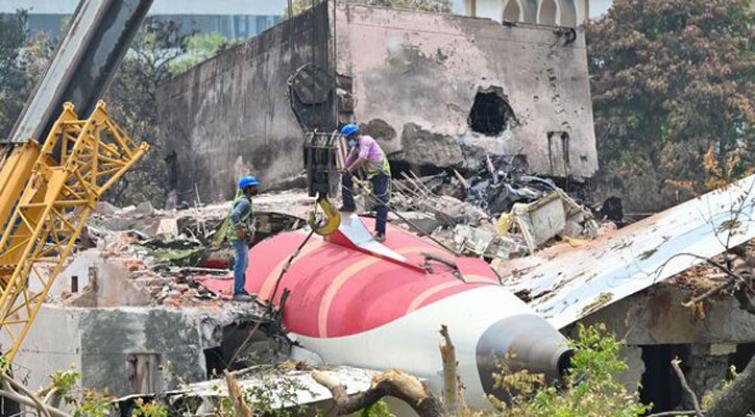By FnF Correspondent | PUBLISHED: 12, Jul 2025, 11:09 am IST | UPDATED: 12, Jul 2025, 11:09 am IST
 The Aircraft Accident Investigation Bureau (AAIB) has released its preliminary findings on Saturday (July 12) into the tragic crash of Air India flight AI 171, revealing that both engine fuel control switches were cut off just seconds after takeoff. The crash, which occurred on June 12 (Thursday), killed all 260 people onboard and on the ground after the aircraft plummeted into a medical hostel complex near Ahmedabad airport.
The Aircraft Accident Investigation Bureau (AAIB) has released its preliminary findings on Saturday (July 12) into the tragic crash of Air India flight AI 171, revealing that both engine fuel control switches were cut off just seconds after takeoff. The crash, which occurred on June 12 (Thursday), killed all 260 people onboard and on the ground after the aircraft plummeted into a medical hostel complex near Ahmedabad airport.The engines were later restarted, with the fuel switches turned back to RUN at 08:08:52 (Engine 1) and 08:08:56 (Engine 2). While Engine 1 began to recover, Engine 2 could not arrest its deceleration despite repeated attempts by the system to reignite and stabilise it.
Although relight sequences were initiated automatically by the aircraft’s FADEC system, thrust recovery was incomplete by the time the aircraft began descending sharply.
The aircraft achieved a maximum recorded airspeed of 180 knots just after liftoff but started to lose altitude before even crossing the airport perimeter wall. The Ram Air Turbine (RAT), which deploys in emergencies to provide limited power, was observed in CCTV footage during the initial climb.
The flight data recorder stopped at 08:09:11 UTC. Moments before that, at 08:09:05 UTC, a distress call — "MAYDAY MAYDAY MAYDAY" — was transmitted, but there was no response when the Air Traffic Controller tried to verify the call sign. Seconds later, the plane crashed outside the airport boundary.
At 08:14:44 UTC, airport crash fire tenders left for the site and were joined by local fire and rescue services. The swift response, however, could do little to prevent the devastating loss of life.
The AAIB also noted that in 2018, the U.S. Federal Aviation Administration (FAA) had issued a Special Airworthiness Information Bulletin (SAIB) about the disengagement of fuel control switch locking mechanisms on 737 aircraft. Though similar switch designs are used in Boeing 787-8 aircraft, including part number 4TL837-3D found in the crashed VT-ANB jet, the bulletin was only advisory and not mandatory.
As per Air India’s records, inspections recommended under the SAIB were not carried out, since the advisory was not a regulatory requirement.
Air India’s maintenance logs indicate that the throttle control module on the aircraft was replaced in both 2019 and 2023, but these replacements were unrelated to any fault in the fuel control switches. No defects linked to the switches had been reported in recent maintenance checks.
The AAIB has indicated that the investigation is ongoing and more evidence is being analyzed. The final report is expected to shed further light on the technical, human, and procedural factors behind one of India’s deadliest aviation disasters in recent years.

by : Priti Prakash
This week has thrown up a firestorm of global developments. Let's dive into the top 5 internati...